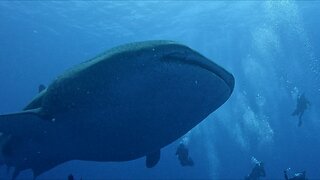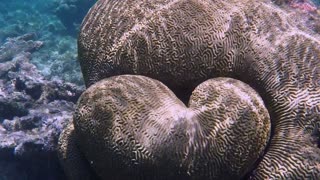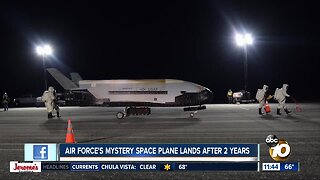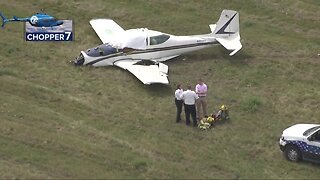Premium Only Content

Historic WWII plane discovered 60 years after crash landing
Japanese zeroes were legendary for their role in the attack on Pearl Harbor in World War II. They became even more infamous after becoming the tool for kamikaze suicidal pilots during second world war.
This Japanese Zero has a fascinating and mysterious history that has only recently come to light. The wreck of this plane was found in 2004 by a villager, William Nui, who was freediving for sea cucumbers to feed his family. When he saw it, he first thought it was the wreck of a small passenger plane that had been lost several days before after taking off from Hoskins Airport in Papua New Guinea. But when he dove again and inspected it closer, he saw that it was a much older wreck. He informed the local authorities and word spread to the ears of a man named Max Benjamin. Max runs the Walindi resort and dive operation. He dove on the wreck to investigate the mysterious discovery and learn more about it. He found it in remarkable condition, with no signs of combat damage or bullet holes. This suggests that the pilot was not shot down. The throttle lever and pitch control were in a position that suggested that the plane was likely running out of fuel and that the pilot had executed a controlled water landing, probably after becoming lost.
Using the serial number of the plane and factual war records, Max learned that the plane had taken off from West New Britain on December 26th 1944, flown by Tomiharu Honda. Records show that planes making such emergency landings after running out of fuel were not uncommon in the Pacific during WWII. Honda was obviously a skilled pilot to conduct a water landing that placed him 50m (150 feet) from shore in an undamaged plane.
Although the wreckage of the plane tells us the story of what happened to the pilot that day, what happened to him afterwards remains a mystery. Stories of the local villagers suggest that Honda was helped to the village of Talasea. While this may be true, cannibalism was still practiced in that time and some people believe that he may not have survived long after his landing. His fate remains unknown.
This dive site and the history behind the wreck provide scuba divers with a fascinating place to explore. Walindi Resort and the MV FeBrina dive boat make this excursion regularly. The wreck is surprisingly intact, although corals and sponges are slowly taking over and the ocean is claiming the plane as her own. This plane had rested undiscovered at the bottom of the bay for almost 60 years.
-
 1:33
1:33
WildCreatures
1 month ago $0.39 earnedGigantic whale shark makes scuba divers look like tiny tadpoles
2.39K5 -
 1:46
1:46
WMAR
6 years agoSmall plane erupts in flames after making crash landing
1741 -
 2:30
2:30
WMAR
5 years ago15 years later: Family thanks firefighters after 2004 crash
33 -
 1:16
1:16
WFTX
6 years agoOne dead after plane crash in Naples
83 -
 0:18
0:18
KIVI
6 years agoPilot uninjured after plane crash at Caldwell airport
269 -
 2:02
2:02
ViralHog
6 years agoHeart Shaped Coral Discovered During Dive
21 -
 0:37
0:37
KGTV
6 years agoAir Force's mystery space plane lands after 2 years
72 -
 2:19
2:19
WXYZ
6 years ago2 dead after small plane crash in Livingston County
48 -
 2:05
2:05
WXYZ
6 years ago2 dead after small plane crash in Livingston County
52 -
 1:11
1:11
WFTS
6 years agoWell-known Tampa plastic surgeon dies after plane crash in Indiana
4